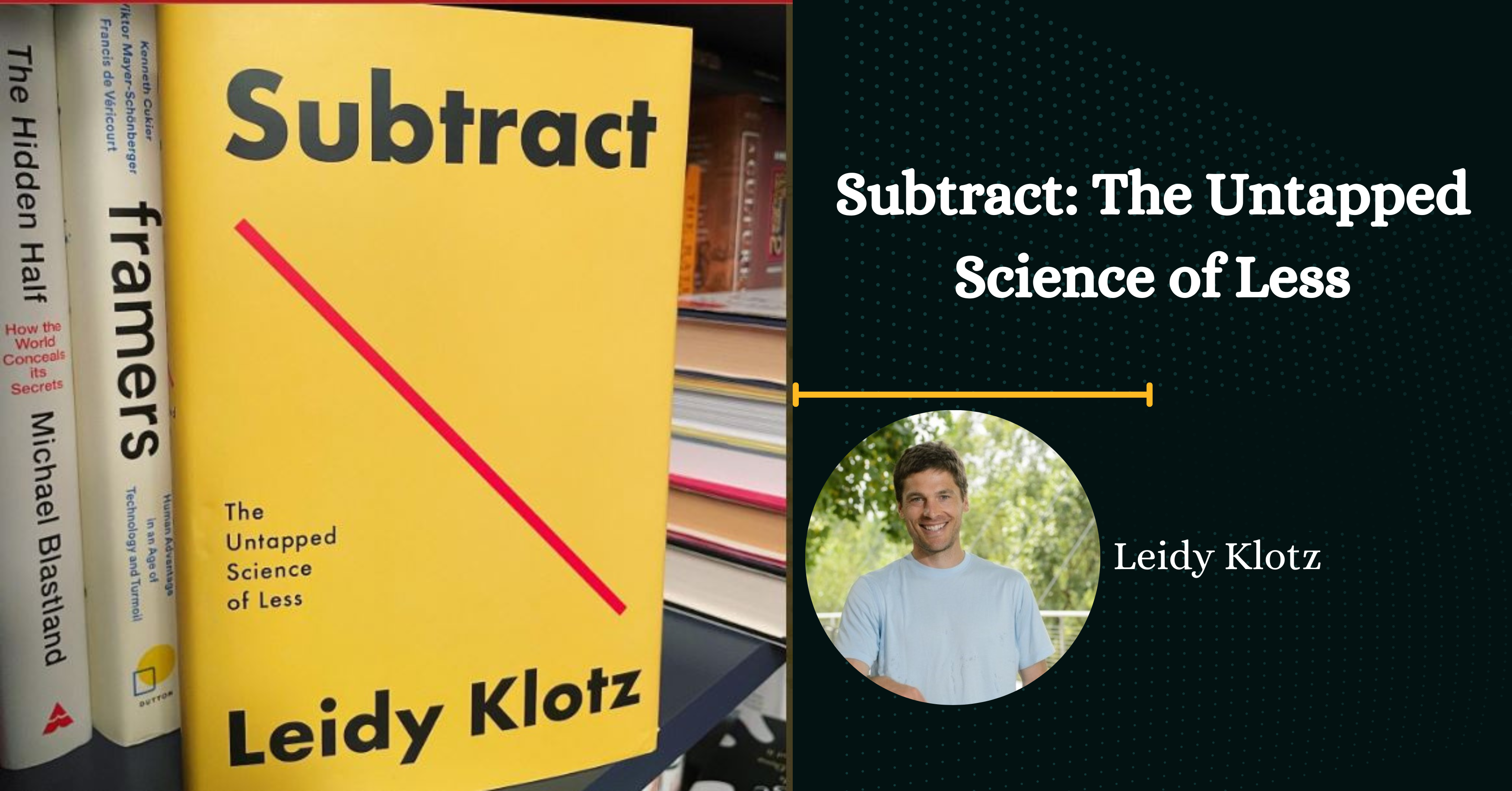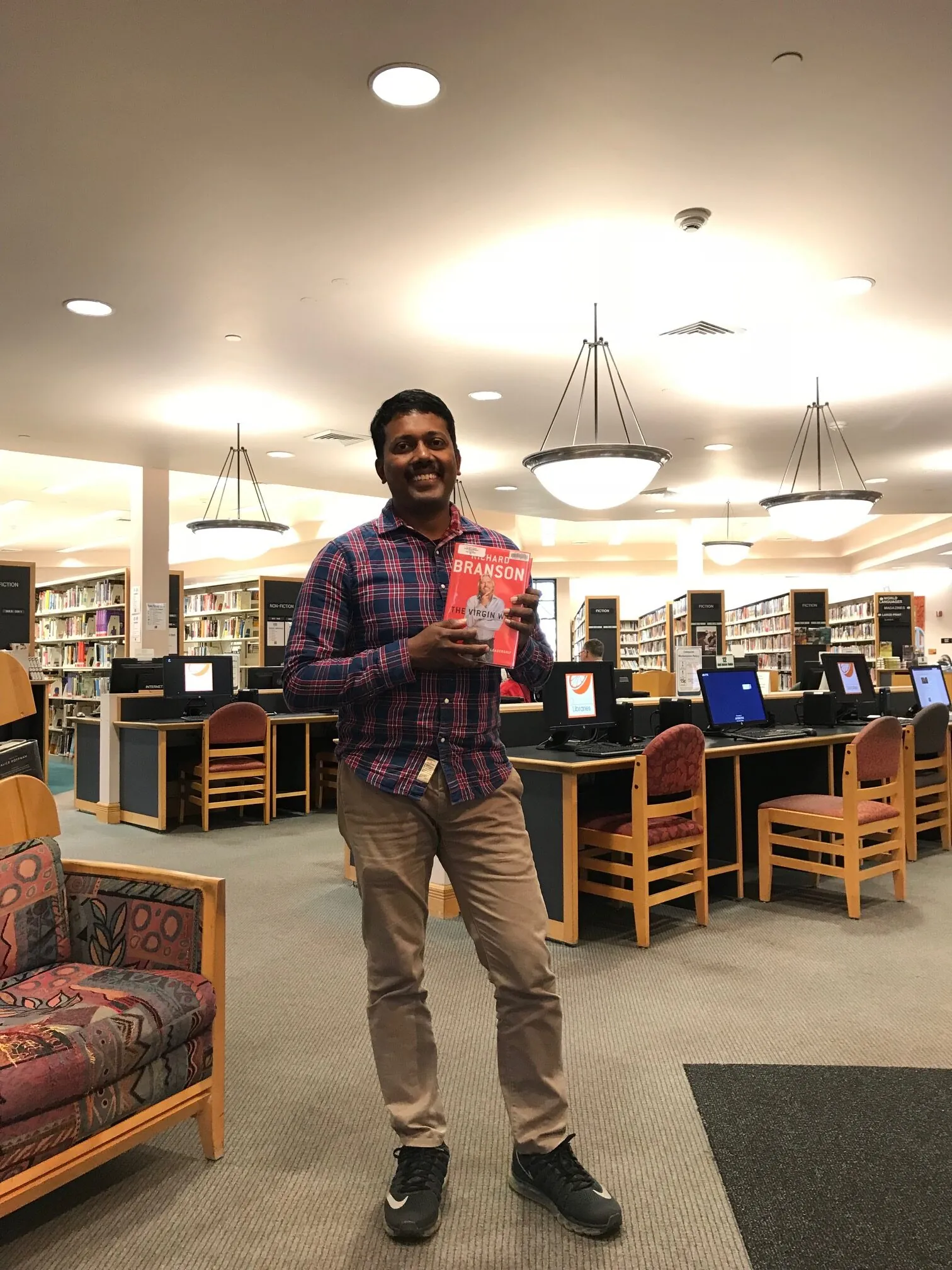Subtract – Leidy Klotz
Subtract is a good book written by Leidy Klotz. We always keep adding in life and do not subtract. To lead a healthy and good life subtracting should be a key part of the plan. However, the author also writes that it is not just about Subtraction- It is also about addition.
Sue Bierman, a Civic leader in San Francisco, wanted to subtract the Embarcadero freeway. But there was wide opposition to the same. However, the Loma Prieta earthquake (October 17-1989) destroyed the Embarcadero freeway. It turned out to be better for San Francisco. Now parks in San Francisco are named in her honor. If you subtract, you will exploit the inefficiencies in our market of changes.
“To attain knowledge, add things every day. To attain wisdom, subtract things every day” (Lao Tzu – Chinese Philosopher). Pablo Picasso defined art as the “elimination of unnecessary”.
The author says that it is harder to show competence with Subtraction. You do not have much to show far. The author also offers some tips for understanding negative numbers (teach kids where expenses exceed income- (or) golf- try strokes below par. Transformation happens not just by adding, but also subtracting. Subtraction could be your strategic advantage. To transform via subtracting requires more thinking.
Civilization:
Hunter Gatherer was the sole occupation. However, five thousand years ago, Hunter Gatherer was not the sole occupation. Additions lead to civilization. Monumental architectures are reliable sign of civilization. In the late 1830s people raised a million dollars to solicit designs for a monument of George Washington in the District of Columbia. At the time, D.C. was home to 30,000 people. In 1886 the monument was home and its population quadrupled. When large groups of people come together you get culture and civilization.
Maya Lin won the design contest for Vietnam Veterans Memorial where she subtracted large monuments. It also had 58318 names who died fighting for the U.S. in the Vietnam war.
Inventions by Subtraction:
In 1927 patent Anna Keichline K-brick subtracted the mass and created hollow bricks (used in construction) today. The insulation provided by the air makes it more comfortable and less noisy. Ryan McFarland, Strider bikes, removed pedals in the bikes (for kids).
How do we use both addition and Subtraction?
January 20′ 1949 – President Harry Truman’s inaugural speech was the first televised inaugural address. Anaphora – made by repeating the same word or phrase at the beginning of successive sentences for emphasis (Did you know? – Did you know? / Have you, Have you? )
For better productivity, you need a stop-doing list. The author also says that, shockingly, only a small percentage of people spend money to save time.
Lexington , KY: In 1833, Lexington, Kentucky, was home to about six thousand people, and more than five hundred of them had died of Cholera. In the 21st Century, the city was approaching a population of three hundred thousand people, and they held a design contest. The winner was Kate Orff’s tiny firm SCAPE. Kate won by Subtraction. She won by removing infrastructure from downtown Lexington.
However, when you remove things (which takes more time), it also becomes hard to win appreciation. In schools, we tend to write more to please our teachers, which should not be the case. The author also quotes examples from Marie Kondo and her book “The Life-changing magic of Tidying up”- Tidying up your physical space allows you to tend to your psychological space. The best way to find out what we really need is to get rid of what we don’t. The author also quotes Daniel Kahneman’s book – Thinking Fast and Slow. (We value things we have more than the things we don’t.)
Jenga: Leslie Scott, a game designer and the inventor of the game Jenga where you subtract blocks and keep building by removing, is in stark contrast with Lego, where you play by addition. There are a lot of lessons we can learn from Jenga.
Doughnut: To fully cook the insides of the dough, the dough would have to stay in the oil for a longer time, which would lead to the outsides becoming burnt. Punching a hole in the middle of the dough, however, allows the insides and the outsides to cook evenly, creating a perfect doughnut. (Source: Google) – Again, punching a hole is Subtraction.
Towards the end of the book, Leidy writes about Climate change and the problems surrounding us because of the multiple additions we have made. He also cites the example of Costa Rica on its mission to be carbon neutral. We should subtract some of what we do so it leads to a better environment. The author also says that if he learns to subtract wrong ideas, we gain rare power. The author also quotes an example of how he topped a Mechanics course (which he was very bad at). He figured out what to subtract and understood the essence.
One thing I did enjoy about this author is that he quotes several books, which can also be recommendations for us to read. Here are some books quoted in Subtract.
Too much to know – Ann Blair
The Structure of Scientific Revolutions – Thomas Kuhn.
The life-changing magic of tidying up – Marie Kondo
Thanks Leidy Klotz.




Leave a Reply